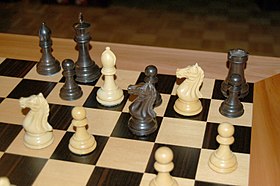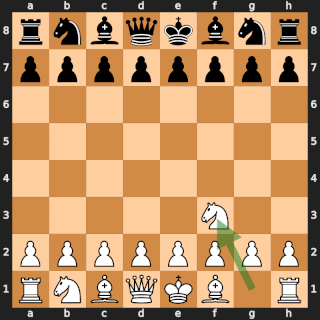
The Game of the Century is a chess game that was won by the 13-year-old future world champion Bobby Fischer against Donald Byrne in the Rosenwald Memorial Tournament at the Marshall Chess Club in New York City on October 17, 1956. In Chess Review, Hans Kmoch dubbed it "The Game of the Century" and wrote: "The following game, a stunning masterpiece of combination play performed by a boy of 13 against a formidable opponent, matches the finest on record in the history of chess prodigies."

The Evergreen Game is a famous chess game won by Adolf Anderssen against Jean Dufresne in 1852.
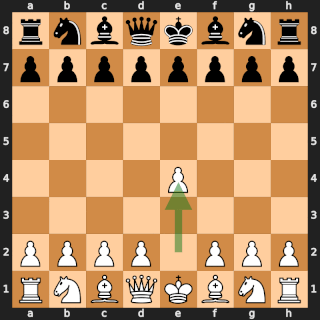
The Opera Game was an 1858 chess game, played at an opera house in Paris. The American master Paul Morphy played against two strong amateurs: the German noble Karl II, Duke of Brunswick, and the French aristocrat Comte Isouard de Vauvenargues. It was played as a consultation game, with Duke Karl and Count Isouard jointly deciding each move for the black pieces, while Morphy controlled the white pieces by himself. The game was played in a box while an opera was performed on stage. Morphy quickly checkmated his opponents following rapid development of material, involving a queen sacrifice.

Checkmate is any game position in chess and other chess-like games in which a player's king is in check and there is no possible escape. Checkmating the opponent wins the game.
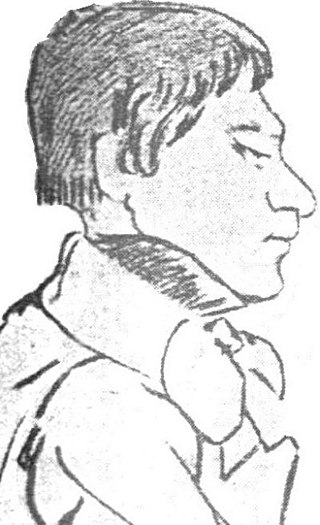
Lionel Adalbert Bagration Felix Kieseritzky was a Baltic German chess master and theoretician, known for his contributions to chess theory, as well for a game he lost against Adolf Anderssen, known as the "Immortal Game". Kieseritzky's name became associated with several openings and opening variations, such as the Kieseritzky Gambit, Kieseritzky Attack, and the Boden–Kieseritzky Gambit.

Kasparov versus the World was a game of chess played in 1999 over the Internet. It was a consultation game, in which a World Team of thousands decided each move for the black pieces by plurality vote, while Garry Kasparov conducted the white pieces by himself. More than 50,000 people from over 75 countries participated in the game.
In chess, a pure mate is a checkmate position such that the mated king is attacked exactly once, and prevented from moving to any of the adjacent squares in its field for exactly one reason per square. Each of the squares in the mated king's field is attacked or "guarded" by one—and only one—attacking unit, or else a square which is not attacked is occupied by a friendly unit, a unit of the same color as the mated king. Some authors allow that special situations involving double check or pins may also be considered as pure mate.
Handicaps in chess are handicapping variants which enable a weaker player to have a chance of winning against a stronger one. There are a variety of such handicaps, such as material odds, extra moves, extra time on the chess clock, and special conditions. Various permutations of these, such as "pawn and two moves", are also possible.
In chess, a queen sacrifice is a move that sacrifices a queen in return for some compensation, such as a tactical or positional advantage.
Romantic chess is a style of chess popular in the 18th century until its decline in the 1880s. This style of chess emphasizes quick, tactical maneuvers rather than long-term strategic planning. Romantic players consider winning to be secondary to winning with style. The Romantic era of play was followed by the Scientific, Hypermodern, and New Dynamism eras. Games during this era generally consisted of 1.e4 openings such as the King's Gambit and Giuoco Piano. Queen-side pawn openings were not popular and seldom played. The Romantic era is generally considered to have ended with the 1873 Vienna tournament where Wilhelm Steinitz popularized positional play and the closed game. This domination ushered in a new age of chess known as the "Modern", or Classical school, which would last until the 1930s when hypermodernism began to become popular.
The Peruvian Immortal is the name given to a chess game played by the Peruvian master Esteban Canal against an unknown amateur in a simultaneous exhibition he gave at Budapest in 1934. In just 14 moves, Canal sacrificed both his rooks and his queen, finishing with Boden's mate.
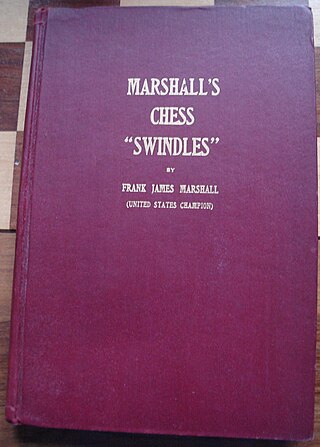
In chess, a swindle is a ruse by which a player in a losing position tricks their opponent and thereby achieves a win or draw instead of the expected loss. It may also refer more generally to obtaining a win or draw from a clearly losing position. I. A. Horowitz and Fred Reinfeld distinguish among "traps", "pitfalls", and "swindles". In their terminology, a "trap" refers to a situation where players go wrong through their own efforts. In a "pitfall", the beneficiary of the pitfall plays an active role, creating a situation where a plausible move by the opponent will turn out badly. A "swindle" is a pitfall adopted by a player who has a clearly lost game. Horowitz and Reinfeld observe that swindles, "though ignored in virtually all chess books", "play an enormously important role in over-the-board chess, and decide the fate of countless games".

The Immortal Losing Game is a chess game between the Soviet grandmaster David Bronstein and the Polish International Master Bogdan Śliwa played in 1957 in Gotha. The name is an allusion to the more famous Immortal Game between Adolf Anderssen and Lionel Kieseritzky. The game acquired its name because Bronstein, in a completely lost position, set a series of elegant traps in an attempt to swindle a victory from a lost game, although Śliwa deftly avoided the traps and won.
The opposite-colored bishops endgame is a chess endgame in which each side has a single bishop and the bishops reside on opposite-colored squares. Without other pieces besides pawns, these endings are widely known for their tendency to result in a draw. These are the most difficult endings in which to convert a small material advantage to a win. With additional pieces, the stronger side has more chances to win, but not as many as when bishops are on the same color.

Poole vs. HAL 9000 is a chess game depicted in the 1968 science fiction film 2001: A Space Odyssey. Astronaut Frank Poole (White) plays the supercomputer HAL 9000 (Black) using a video screen as a chessboard. Each player takes turns during a game in progress, making their moves orally using descriptive notation and natural language. Poole resigns the game once HAL indicates a certain path to checkmate; however, the move which HAL suggests Frank might make is not forced. Stanley Kubrick, director of 2001, was an avid chess player.
In a chess endgame of a king, bishop, and pawn versus king, a wrong rook pawn is a rook pawn whose promotion square is the opposite color from the bishop's square color. Since a side's rook pawns promote on opposite-colored squares, one of them may be the "wrong rook pawn". This situation is also known as having the wrong-colored bishop or wrong bishop. In many cases, the wrong rook pawn will only draw, when any other pawn would win. A fairly common defensive tactic is to reach one of these drawn endgames, often through a sacrifice.
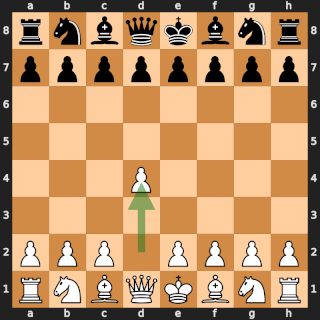
Rotlewi versus Rubinstein is a game of chess played between Gersz Rotlewi and Akiba Rubinstein in Łódź, Poland on December 26, 1907. It features a brilliant queen and rook sacrifice by Rubinstein to force mate.
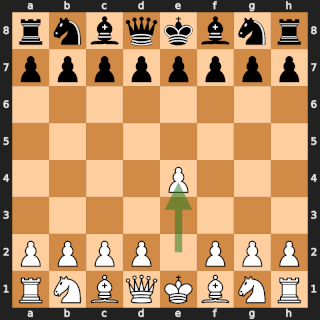
Kasparov's immortal is a chess game played by Garry Kasparov as White against Veselin Topalov as Black at the Hoogovens Wijk aan Zee Chess Tournament 1999 chess tournament. This is one of Kasparov's most famous games; it is considered a masterpiece and Chess.com has listed it as the #1 chess game ever played.
In chess, an economical mate is a checkmate position such that all of the attacker's remaining knights, bishops, rooks and queens contribute to the mating attack. The attacker's king and pawns may also contribute to the mate, but their assistance is not required, nor does it disqualify the position from being an economical mate. Economical mates are of interest to chess problem composers for their aesthetic value. In real gameplay, their occurrence is incidental. Nevertheless, some notable games have concluded with an economical mate such as the Opera game, won by Paul Morphy.

